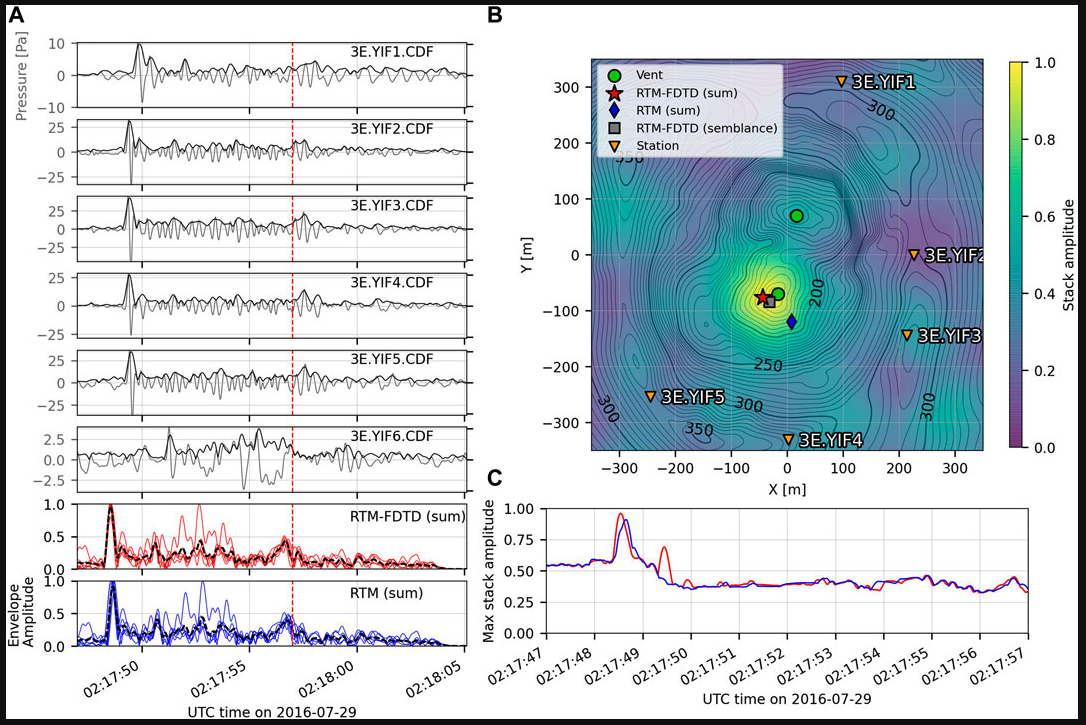Infrasound data are routinely used to detect and locate volcanic and other explosions, using both arrays and single sensor networks. However, at local distances (<15 km) topography often complicates acoustic propagation, resulting in inaccurate acoustic travel times leading to biased source locations when assuming straight-line propagation. Here we present a new method, termed Reverse Time Migration-Finite-Difference Time Domain (RTM-FDTD), that integrates numerical modeling into the standard RTM back-projection process. Travel time information is computed across the entire potential source grid via FDTD modeling to incorporate the effects of topography. The waveforms are then back-projected and stacked at each grid point, with the stack maximum corresponding to the likely source. We apply our method to three volcanoes with different network configurations, source-receiver distances, and topography. At Yasur Volcano, Vanuatu, RTM-FDTD locates explosions within ∼20 m of the source and differentiates between multiple vents. RTM-FDTD produces a more accurate location for the two Yasur subcraters than standard RTM and doubles the number of detected events. At Sakurajima Volcano, Japan, RTM-FDTD locates the source within 50 m of the active vent despite notable topographic blocking. The RTM-FDTD location is similar to that from the Time Reversal Mirror method, but is more computationally efficient. Lastly, at Shishaldin Volcano, Alaska, RTM and RTM-FDTD both produce realistic source locations (<50 m) for ground-coupled airwaves recorded on a four-station seismic network. We show that RTM is an effective method to detect and locate infrasonic sources across a variety of scenarios, and by integrating numerical modeling, RTM-FDTD produces more accurate source locations and increases the detection capability.
